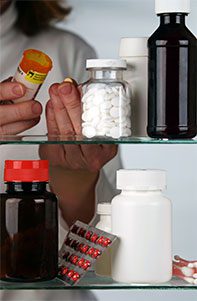
In 2015, more than 12 million Americans reported misusing a prescription opioid in the past year.
New data just released from the Centers for Disease Control and Prevention (CDC) show that 91 people die every day from an opioid overdose – a marked increase from 78 in 2014. Hospitalizations related to opioid misuse also have increased dramatically, with new data now showing the rate of adult hospital inpatient stays per 100,000 population nearly doubling between 2000 and 2012. If it weren’t for the life-saving opioid overdose reversal drug naloxone, the tragic loss of life in our communities would be even greater.
While naloxone has saved tens of thousands of lives, what is often missed in media coverage of the opioid epidemic – and in many of the policy recommendations designed to address it – is the need to attack this problem more cost effectively and humanely, much further upstream, at a point when physicians, together with family members and communities, can prevent addiction and overdose from taking hold.
In particular, physicians must play a key role all along the continuum from prevention to intervention and referral to treatment. Above all, we must address substance use disorders as health problems rather than social or moral issues. We need to help identify at-risk patients via regular, validated screening, conduct brief interventions and refer patients to evidence-based treatment. And we need to do a much better job talking to our patients about the risks of opioid analgesics, including avoiding alcohol, side effects, safe storage and disposal, risks of addiction or dependence, non-opioid pain management, and a plan for discontinuing opioids if they are called for in some cases.
In addition, physicians should:
- Make use of each state’s Prescription Drug Monitoring Program (PDMP) to review patients’ histories of prescription drug use, and act on this information in consultation with the patient.
- Avoid prescribing opioids to new patients with chronic, non-cancer pain unless the benefits are expected to outweigh the risks. If opioids are clinically indicated, follow the CDC prescriber guideline and “start low and go slow.” Also consider whether abuse-deterrent formulations would help reduce the likelihood of misuse or abuse by the patient or by others in the patient’s home.
- Become trained to provide Medication Assisted Treatment (MAT) for opioid or alcohol use disorder, and recommend this when appropriate for patients struggling with substance use disorders. More than 36,000 physicians are trained to provide MAT; many more are needed.
As alarming and tragic as news of the opioid epidemic has been, much progress is being made. In 2015, we saw a 40 percent increase compared to the previous year in consultation of state PDMPs – and since 2012 there has been an 11 percent drop in opioid prescriptions.
And it’s not just physicians who can turn the tide. As parents, sons, daughters, friends – are we ready? When children ask tough questions – and they will – do you know what to do? When we see our mothers or fathers in need of help, do you know how to help? Do you know where to get help?
All of us – health care professionals, parents, educators, community leaders, law enforcement and policy makers – have a role to play in reversing the nation’s opioid epidemic and saving lives. The American Medical Association and the Partnership together are committed to ensuring that physicians and families have the education and resources they need. We urge you to join us in our efforts to reverse this national epidemic.